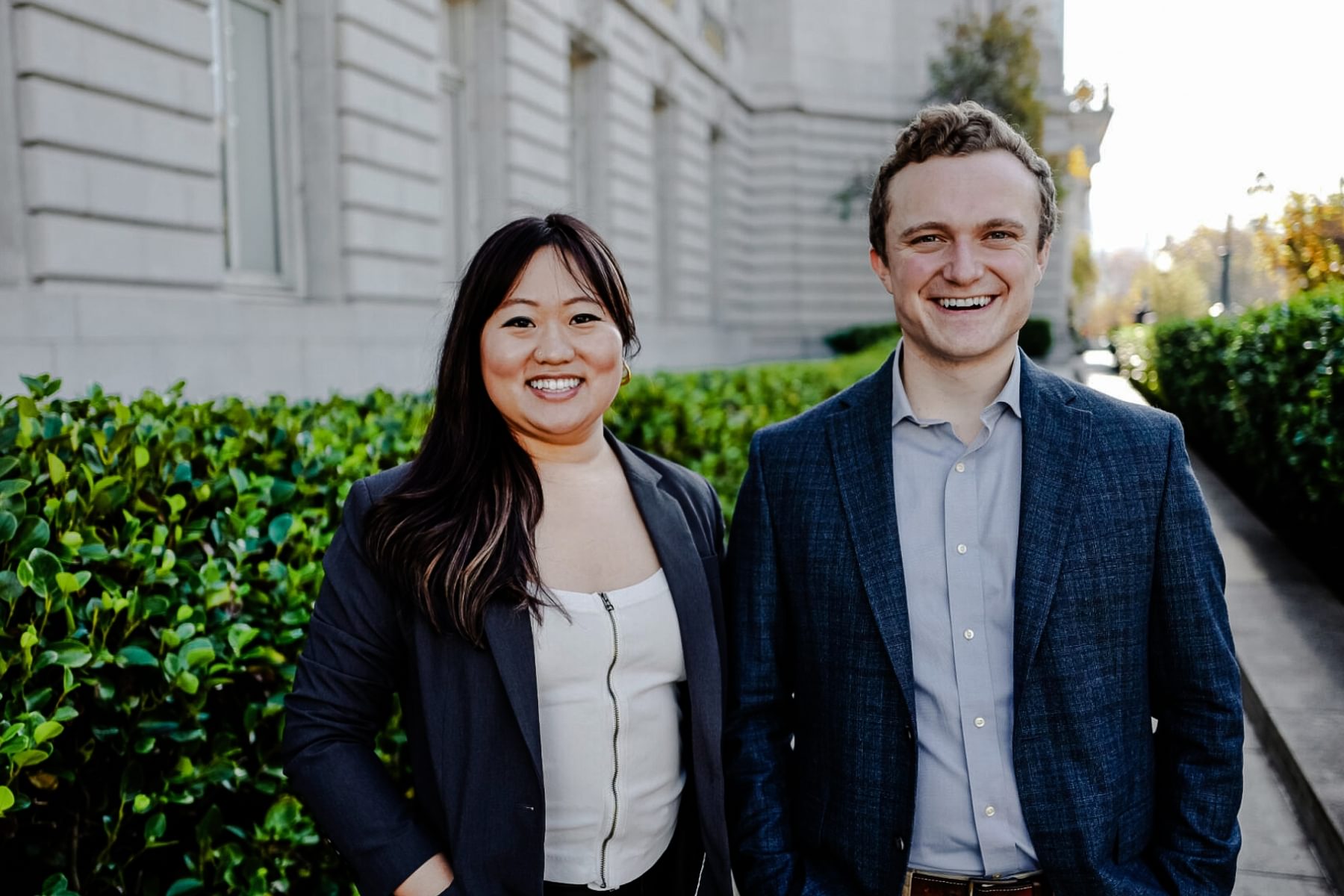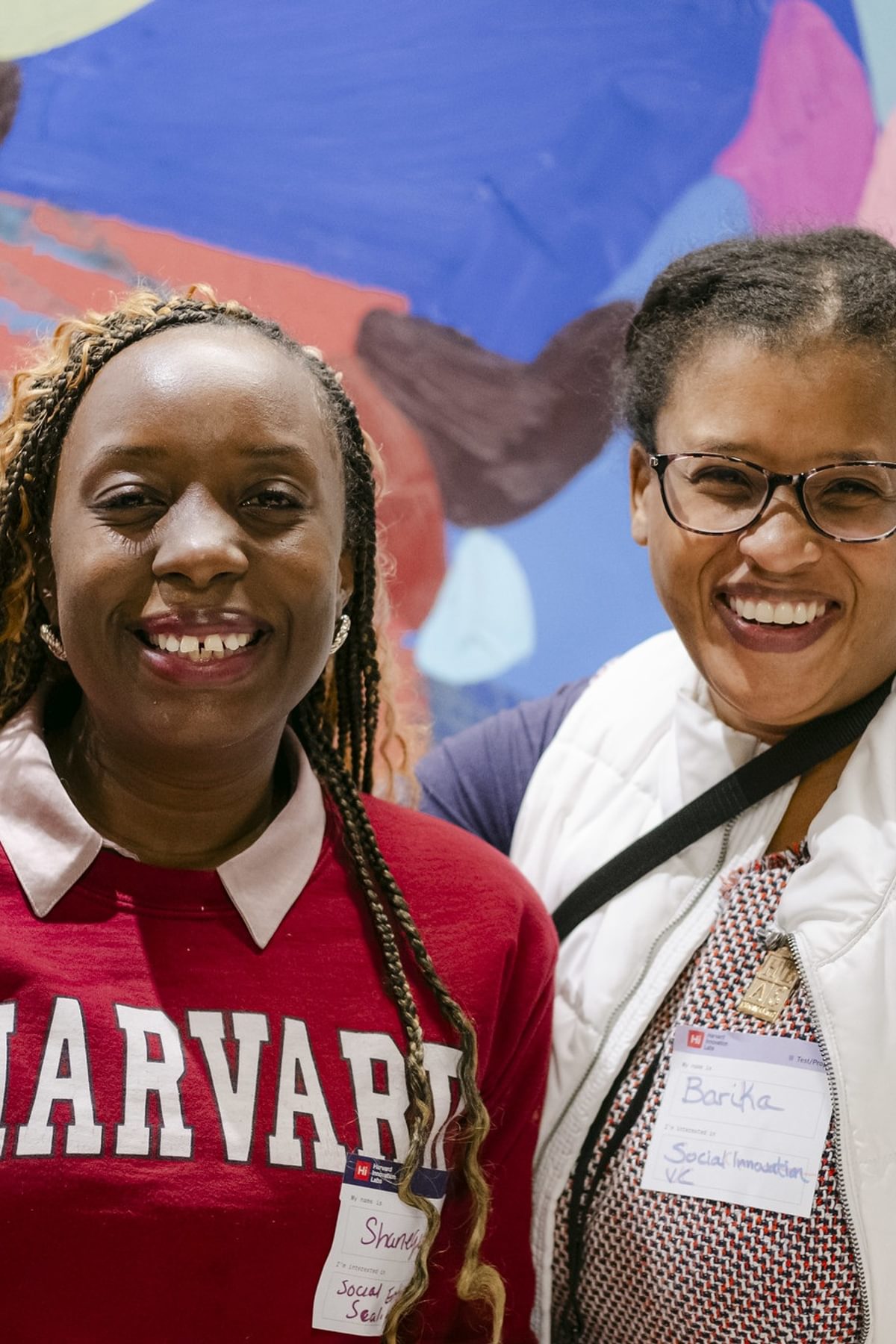Each year, billions of prefilled syringes are transported across the globe, offering a sterile, convenient, and precise way to administer everything from vaccines to therapeutics. While the prefilled syringe’s construction has undergone numerous refinements since it was invented in the 1950s, the basic commercialized design of a plunger attached to a barrel remained unchanged.
When Ian Speers (HSPH '23) was managing medical supply chains and emergency response programs in Africa and the Middle East before and during the COVID-19 pandemic, he saw how the design of prefilled syringes was limiting the distribution of critical medicines.
“Shipping for every single box of medications was so expensive, logistically challenging, and carbon intensive,” explained Speers. “When I began opening boxes of prefilled syringes specifically, I saw we were using about half the space just to transport the plastic plunger rod. I felt there must be a way to increase the number of syringes you could ship in a single box, thereby improving access to much-needed drugs.”
In an interview with the Harvard Innovation Labs, Speers shared the three-year journey of how this idea turned into Pacto Medical, a startup recognized by the World Health Organization for developing a compact prefilled syringe that lowers manufacturing, shipping, and storage costs, while also reducing the product’s environmental impact.
Phoning a Friend
Prior to his career in public health, Speers attended Dartmouth College, where he met Robert Halvorsen, who studied engineering and human-centered design. The two stayed close after graduating, and when Speers had an idea for designing a new kind of prefilled syringe, Halvorsen was the first person he called.
Halvorsen had been working in product development for his whole career after college, and was “immediately drawn to the problem” Speers shared. After that conversation, Halvorsen called his good friend from grad school and fellow mechanical engineer, Ryan Stinebaugh.
We really quickly took to the human aspect and the impact potential of Ian's idea. Soon after, the three started building prototypes as co-founders of Pacto Medical. Ryan Stinebaugh, Co-founder, Pacto Medical
Human-Centered Design
In 2022, Pacto Medical’s founders spent about five months designing the first version of their product. This process started with exploring the general design focus they would pursue through creative brainstorming sessions.
We were intentional about thinking of big and crazy ideas so that we would not limit ourselves to something simple or obvious. And what's interesting about that process is that when you go through that, sometimes you end up back at the simplest concept. Robert Halvorsen, Co-Founder, Pacto Medical
After this process, the founders agreed on having a detachable plunger rod attached to the side of the syringe, which was a relatively early idea. From there, Stinebaugh said they began working on “a number of parallel prototypes before landing on one that we were willing to show.”
Making this first prototype was just the beginning of Pacto Medical’s product development. Over the next year, they pursued a human-centered design process, receiving feedback from numerous doctors, nurses, paramedics, logisticians, and public health experts.
"I came to appreciate that, even though a syringe doesn't have any widgets or electronics, it's used by humans, and humans are incredibly complicated and hard to preempt," said Speers.
From the President’s Innovation Challenge to the Climate Circle
Equipped with a 3D-printed prototype, Pacto Medical applied for the 2023 Harvard President’s Innovation Challenge, the i-lab's annual venture competition. The company won an Ingenuity Award, which recognizes ideas that could be world-changing even if they are not yet fully formed ventures, and its captivating 60-second video pitch was aired live for the thousands of attendees at the PIC Awards Ceremony.
After the President’s Innovation Challenge, Pacto Medical applied for the Harvard Climate Entrepreneurs Circle, an incubation program for high-potential ventures working to address climate change, and the company was accepted into the 2024 cohort.
I loved how Climate Circle was an all-you-can-eat buffet of resources. It was when you needed it, as you needed it, and as much as you needed. They did a wonderful job laying out resources, and we were able to pick and choose what we used. Ian Speers, Co-founder, Pacto Medical
Pacto Medical’s founders built relationships with investors and experts, as well as their peers in the incubator. Halvorsen added how he enjoyed using the Harvard i-lab's directory to search for experts that seemed “meant” for the company, like “a lawyer who also has a clinical background.” Speers shared the value of meeting and learning from a group of founders who are “going through the same things” as they build their ventures.
Choosing the Right Time to Fundraise
For the first two years of the company, Pacto Medical was bootstrapped. The startup received non-dilutive grant funding from the Harvard Innovation Labs, Harvard T.H. Chan School of Public Health, the President’s Innovation Challenge, the Dartmouth Entrepreneurs’ Forum, the Clean Green Challenge, and others. At the same time, the founders worked additional jobs to fund product development.
After finalizing their product design, the founders raised money for building out Pacto Medical's manufacturing and operations. In the summer of 2024, they closed pre-seed funding, which came from angel investors, friends, and family. In discussing the fundraising process, Speers shared the value of presenting at the Harvard Social Enterprise Conference, saying, “After my presentation, a few people came up to me to ask if I would need funding for our venture’s next steps. Many of the people I started conversations with that day ended up investing.”
Setting Up Manufacturing and Preparing for Pilots
With its final product design and early funding in place, Pacto Medical moved away from 3D-printing its product and towards implementation of the syringe manufacturing industry standard.
"Our prototypes are now made with an injection molder, which is the same process that is used for the hundreds of millions of medical products that go out every day, said Halvorsen. "The product looks like and works like exactly what it would look like if it was in a hospital."
Pacto Medical is currently in discussions with potential partners for its first pilots, which the company aims to launch in 2025. Halvorsen explained, “For our initial pilots, we’re casting a wide net – whoever needs a compact, prefilled syringe, we would like to talk to them.”



Receiving World Health Organization Recognition
Recently, the world’s most recognized global healthcare organization highlighted Pacto Medical’s work in reimagining the prefilled syringe.
In November 2024, the World Health Organization (WHO) invited the startup to present at the WHO Emergency Medical Teams (EMT) Global Meeting in Abu Dhabi. During the event, Pacto was named as one of 10 WHO Emergency Medical Team Innovation Champions for 2024.
WHO’s recognition shows that we’re developing this in the right direction," said Speers. "The product is resonating with the people who would be using and benefiting from it."





